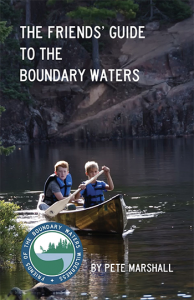Amidships: The center or middle of a canoe.
Bailer: A scoop (usually made from an empty bleach jug by cutting off the bottom) for dipping accumulated water from the bottom of the canoe.
Beam: The width of the canoe, typically provided in three measurements: waterline, gunwale and maximum width.
Belly: The bottom of the canoe.
Bilge: The point of greatest curvature between the bottom and side of a canoe.
Bow: The front end of the canoe.
Broach: To turn suddenly into the wind.
Broadside: A canoe, which is moving perpendicular to the current of a river, thus exposing its broad side to obstacles in the water.
Carry: See portage.
Deck: Panels attached to the inwales at the bow and stern ends of the canoe.
Depth: The distance from the top of the gunnels to the bottom of the canoe when measured at the beam (sometimes called center depth, as opposed to the depth at the extreme ends of the canoe).
Draft: The amount of water a canoe draws.
Entry Line: Shape of the bow where it cuts through the water.
Flare: Occurs when the sides of the canoe are wider above the waterline, particularly at or near the gunwales.
Flat Water: Water without rapids, such as a lake or slow-moving river.
Flotation: Buoyant material set into the ends (or other panels) of a canoe to make it float if upset.
Freeboard: Distance between the gunwale and waterline at the lowest point.
Foot-brace: A wood or metal bar against which a paddler braces his or her feet. Foot-braces help secure the paddler in the canoe and so add to the efficiency of his or her strokes.
Fullness: Shape of canoe determined by how quickly the hull widens. A full canoe widens sooner and stays wide longer.
Gunnels: Both outside and inside, top finished edges of a canoe. Also referred to as rails.
Gunwales: Inside and outside top finished edges of a canoe.
Hull: Frame or body of the canoe.
Hogged: A canoe with a bent-in keel or keel-line.
Inwale: Inside top finished edge of a canoe.
Initial/Primary Stability: Steadiness when upright and paddled under calm conditions.
Keel: External ridge along the centerline of the canoe. Can improve tracking and stability.
Keel Line: Centerline of the canoe running from bow to stern along the belly of the canoe.
Leeward: A sheltered place out of the wind. Also, the direction toward which the wind is blowing.
Lining Rope: Rope used to tie up a canoe or pull it around obstacles in the water. Also refers to working a canoe downstream around obstacles in the water with the aid of ropes (lines) attached to the bow and stern.
Outwale: The outside top finished edge of a canoe.
Painter’s ring: Brass ring anchored to the stem or deck of a canoe to attach a rope.
Planking: Lightweight boards nailed to the ribs on wood-canvas canoes. Its main purpose is to support the canvas.
Portage: The physical act of carrying the canoe over land.
Rails: The gunwales (gunnels) of a canoe.
Ribs: Lateral supports which run at angles to the keel on the inside of a canoe. Ribs provide hull rigidity and structural strength.
River Rating Scale: A nationally recognized scale used by whitewater canoeists to rate the difficulty of rapids. Rankings from Class I to Class VI. See Water Class and Characteristics.
Rocker: Indicates curvature of the keel line.
Secondary/Final stability: The resistance to capsizing in wind, waves or lean.
Skid plate: A piece of thick Kevlar that is glued to the bottom ends of a canoe. Prevents abrasion of the skin of the canoe.
Splash skirt/cover: A fitted cover designed to keep water out of a canoe. Splash covers are useful in rough rapids and big waves.
Stems: Finished edge/piece in the bow and stern ends of a canoe.
Stern: The rear end of the canoe.
Thwarts: Crossbars toward the bow and stern of the canoe. Structurally maintains the canoe shape.
Tracking: (Canoe) The ease with which a canoe can be paddled along a straight line.
Tracking: (Canoeing) Working a canoe upstream, against the current, with the aid of ropes (lines) attached to the bow and stern.
Trim: The difference in the draft at the bow from that at the stern of a canoe. A properly trimmed canoe will sit dead level in the water.
Tumblehome: The inward curve of the sides of a canoe above the waterline.
Water Class and Characteristics: This nationally recognized scale is used by whitewater canoeists to rate the difficulty of rapids.
- Class I: Easy–easy bends, small rapids with low waves. Obstacles like fallen trees and bridge pilings. River speed less than hard back-paddling speed.
- Class II: Medium–fairly frequent but unobstructed rapids with regular waves and low ledges. River speed occasionally exceeding hard back-paddling speed.
- Class III: Difficult–small falls: large, regular waves covering boat. Expert maneuvering required. Course not always easily recognizable. Current speed usually less than fast forward-paddling speed. Splash skirt useful.
- Class IV: Very Difficult–high, powerful waves and difficult eddies. Abrupt bends and difficult broken water. Powerful and precise maneuvering mandatory. Splash skirt essential.
- Class V: Exceedingly Difficult–very fast eddies, violent current, steep drops. Splash skirt essential.
- Class VI: Limit of Navigability–navigable only at select water conditions by teams of experts in covered canoes. Cannot be attempted without risk of life.
Waterline: The place to which water comes on the hull of the canoe when it is set in the water.
Whitewater: Foamy (air-filled) turbulent water.
Yoke: A strong crossbar in the middle of the canoe designed for carrying the canoe on the shoulders. Often includes two yoke pads for more comfort.














